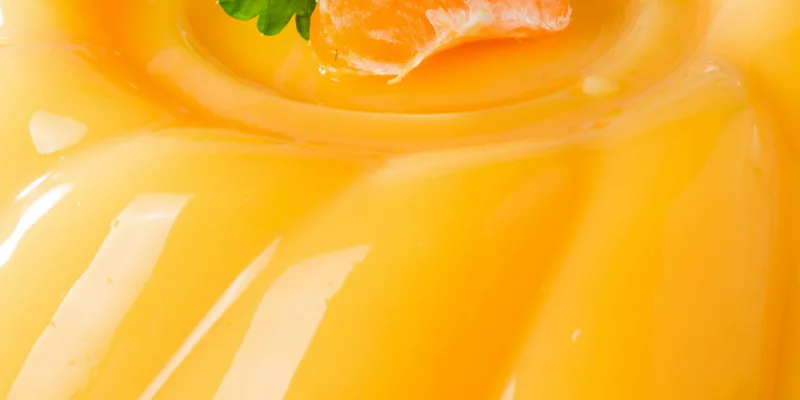
Agar (406) is used for its gelling, thickening and stabilising properties. Agar forms a cloudy, brittle gel, with a neutral flavour.
Application
| Application | Function |
|---|---|
| Canned Meat & Fish | Binds water and forms a gel network around the meat. |
| Icings | Binds free water and improves icing flexibility. |
| Meringues | Binds water and prevents weeping during storage. |
| Fermented milk products | Moisture control. Will not precipitate casein below its isoelectric point. |
Chemistry
Agar (E406) is an unbranched polysaccharide obtained from the cell walls of some species of red algae or seaweed. The word agar comes from the Malay word agar-agar (meaning jelly).
Chemically, agar is a polymer made up of subunits of the sugar galactose. Agar polysaccharides serve as the primary structural support for the algae’s cell walls. Dissolved in hot water and cooled, agar becomes gelatinous. One of its chief uses is as a culture medium for microbiological work.
Properties
Agar is typically sold as packaged strips of washed and dried seaweed, or in powdered form. Raw agar is white and semi-translucent.
Agar is insoluble in cold water and requires boiling to dissolve fully. On cooling, Agar gels between 40°C and 30°C, depending on concentration and quality. The gel is thermo-reversible but does not normally melt below 85°C. This difference in setting and melting temperature can be utilised in certain food applications, for example when using jelly to coat fruit flans at low working temperatures.
Agar will form weak gels at very low concentration (0.2%); rigid gels are formed at concentrations of 0.5%. The maximum strength is developed approximately one hour after reaching room temperature. Gels are usually very firm, rigid, slightly elastic and can have a slightly turbid yellow colouration, although very high quality transparent agars are available. Being strong and rigid, the gel is very prone to syneresis. The addition of Locust Bean gum gives a more elastic gel with less tendency to syneresis.
Agar is sensitive to acids. Increasing sugar levels to a maximum of 20% results in an increase in gel strength. At higher levels, a stiff paste if formed which can be partially acid-hydrolysed to yield a pipable gel. Also, increasing the salt concentration increases the strength of the gel. Agar is stable to retorting but not stable to repeated freezing and thawing. It is not protein reactive.
An example of Agar use is making jelly. It is boiled in water at a concentration of about 0.7-1% w/w until the solids dissolve, after which sweeteners, flavouring, colouring, and pieces of fruit may be added. The agar may then be poured into moulds or incorporated into other desserts, such as a jelly layer on a cake.
